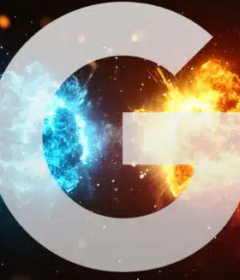My site has been that RankBrain *and/or other machine learning elements within Google’s core algorithm are devloped rewarding pages with high user engagement.
Google is looking for unicorns – and I think that machine learning is Google’s ultimate Unicorn Detector.
Now, when I say unicorns, I mean those pages that have magical engagement rates that elevate them above the other donkey pages Google could show for a given query.
 RankBrain: Into Darkness
RankBrain: Into Darkness
RankBrain, like Google’s algorithm, is a great mystery. Since Google revealed the important role of machine learning and artificial intelligence in its algorithm, Rank Brain has been a surprisingly controversial topic, generating speculation and debate within the search industry.
If you carefully set up an experiment, you should be able to isolate some aspect of what Google is proclaiming as the third most important ranking factor. You should be able to find evidence – a digital fingerprint.

say it’s time to boldly go where no SEO has gone before. That’s what I’ve attempted to do in this post.
Let’s look at some new data.
Find The RankBrain [New Data] What you’re about to look at is organic search click-through rate vs. the average organic search position for three separate 30-day periods ending April 30, July 12, and September 19 of this year. This
data, obtained from the Google Search Console, tracked the same keywords in the Internet marketing niche.

Going beyond the data
This data is showing us something very Different. A couple thoughts:
This is exactly the fingerprint you would expect to see for a machine learning-based algorithm doing query interpretation that impacts rank based on user engagement metrics, such as CTR.
Essentially, machine learning systems move away from serving up 10 blue links and asking a user to choose one of them and toward providing the actual correct answers, further eliminating the need for lower positions.
power of CTR optimization!
OK, so we’ve looked at the big picture. Now let’s look at the little picture to illustrate the remarkable power of CTR optimization.
Let’s talk about guerrilla marketing. Here are two headlines. Which headline do you think has the higher CTR?
Guerrilla Marketing: 20+ Examples and Strategies to Stand Out
This was the original headline for an articles published on the Word Stream blog in 2014.20+ Jaw-Dropping Guerrilla Marketing Examples
This is the updated headline, which we changed just a few months ago, in the hopes of increasing the CTR. And yep, we sure did!Before we updated the headline, the article had a CTR of 1 percent and was ranking in position 8. Nothing awesome.
Increasingly, we’ve been trying to move away from “SEO titles” that look like the original headline, where you have the primary keyword followed by a colon and the rest of your headline.
it all mean?
This example illustrates that if you increase your CTR, you’ll see a nice boost in traffic. Ranking in a better position means more traffic, which means a higher CTR, which also means more traffic.
What’s so remarkable is that this is on-page SEO.
The final frontier When it comes to SEO, your mission is to seek out every advantage.
Source:moz.com
Peter Zmijewski is the founder and CEO at KeywordSpy. His expert knowledge on Internet Marketing practices and techniques has earned him the title “Internet Marketing Guru“ He is also an innovator, investor and entrepreneur widely recognized by the top players in the industry.



